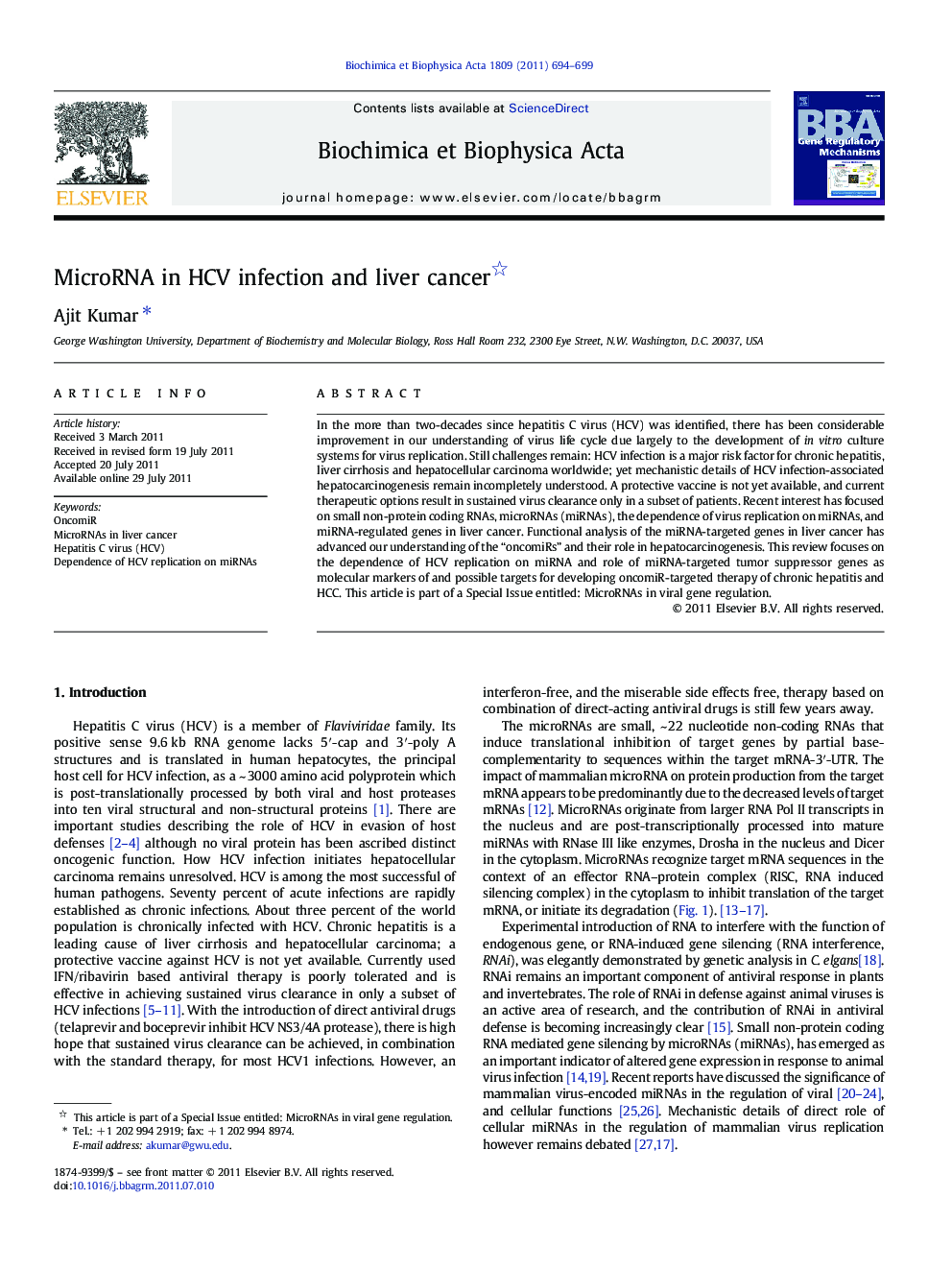| Article ID | Journal | Published Year | Pages | File Type |
|---|---|---|---|---|
| 1946611 | Biochimica et Biophysica Acta (BBA) - Gene Regulatory Mechanisms | 2011 | 6 Pages |
In the more than two-decades since hepatitis C virus (HCV) was identified, there has been considerable improvement in our understanding of virus life cycle due largely to the development of in vitro culture systems for virus replication. Still challenges remain: HCV infection is a major risk factor for chronic hepatitis, liver cirrhosis and hepatocellular carcinoma worldwide; yet mechanistic details of HCV infection-associated hepatocarcinogenesis remain incompletely understood. A protective vaccine is not yet available, and current therapeutic options result in sustained virus clearance only in a subset of patients. Recent interest has focused on small non-protein coding RNAs, microRNAs (miRNAs), the dependence of virus replication on miRNAs, and miRNA-regulated genes in liver cancer. Functional analysis of the miRNA-targeted genes in liver cancer has advanced our understanding of the “oncomiRs” and their role in hepatocarcinogenesis. This review focuses on the dependence of HCV replication on miRNA and role of miRNA-targeted tumor suppressor genes as molecular markers of and possible targets for developing oncomiR-targeted therapy of chronic hepatitis and HCC. This article is part of a Special Issue entitled: MicroRNAs in viral gene regulation.
► We examined alterations in miRNA expression in liver cancer. ► We examined HCV infection-associated changes in miRNA. ► We examined target validation of miRNA in liver cancer. ► We examined the dependence of HCV replication and hepatocarcinogenesis on oncomiRs. ► Finally, we examined the in vivo model of miRNA replacement therapy in liver cancer and finally we make future speculations for animal model for liver cancer.
